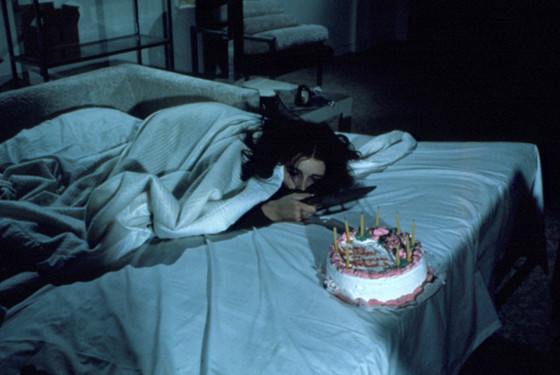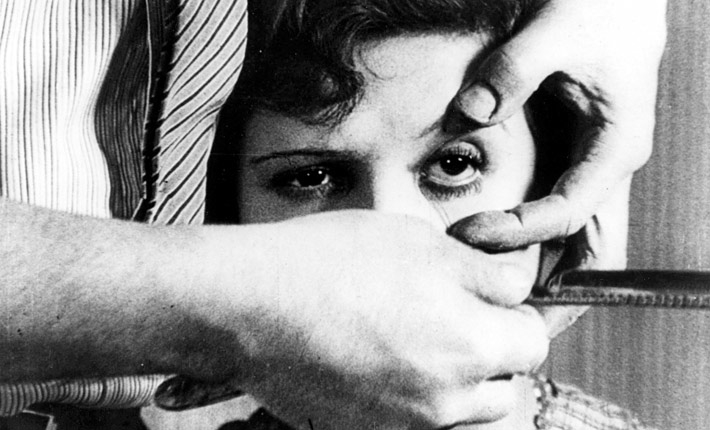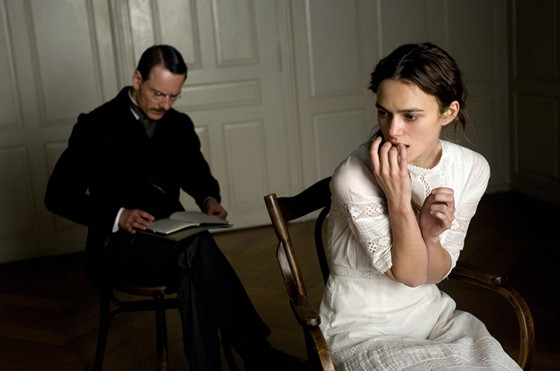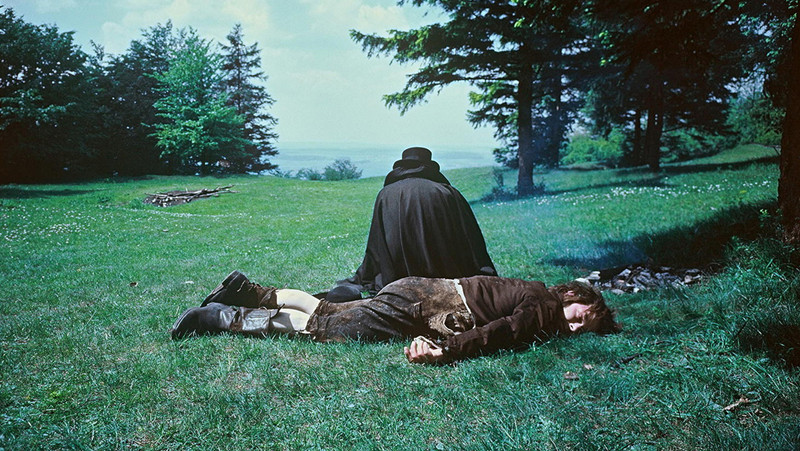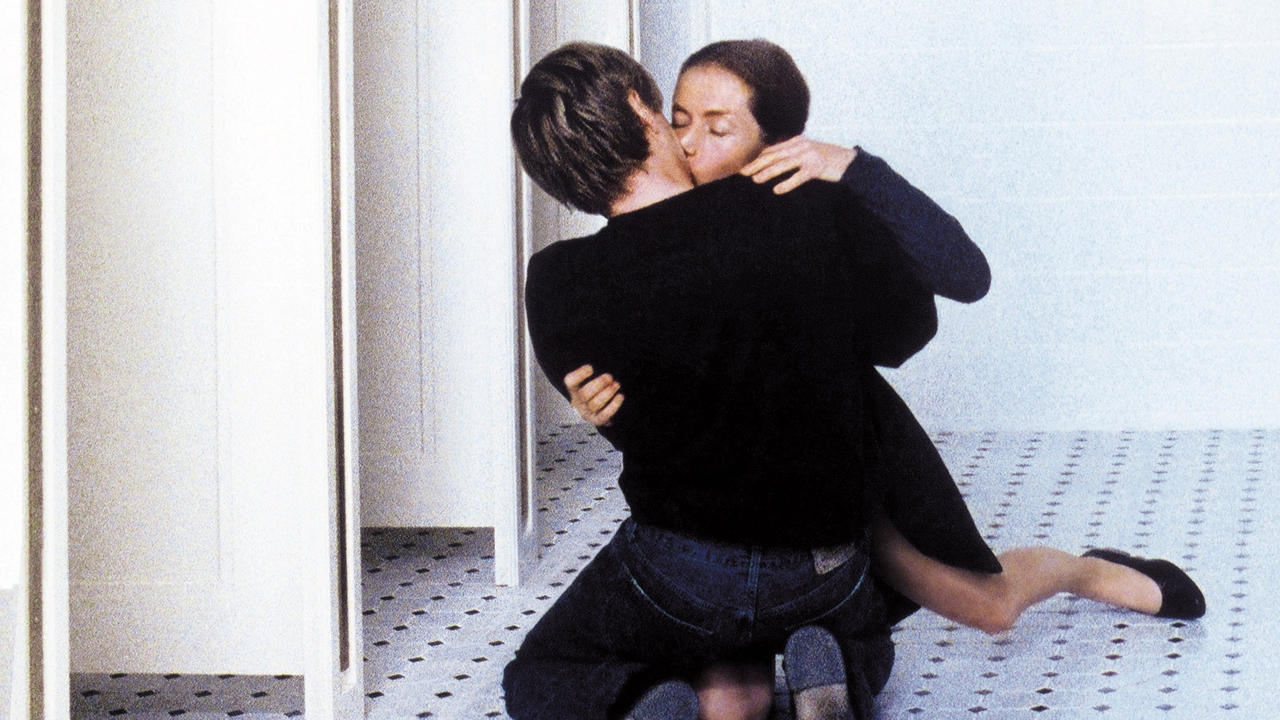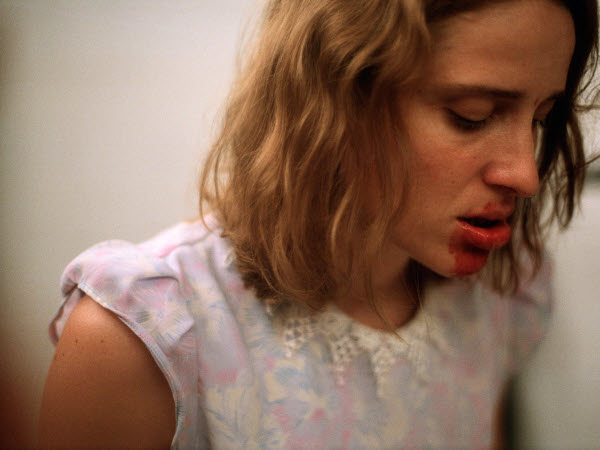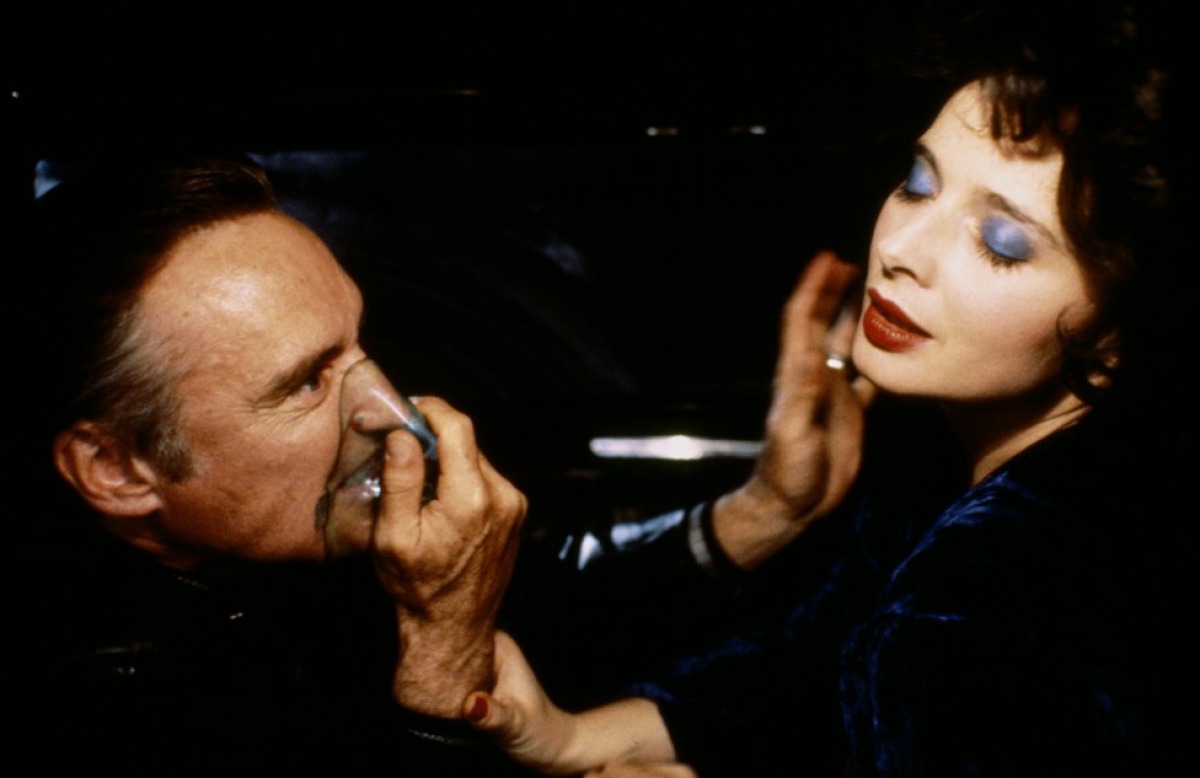The relationship between cinema and psychoanalysis is as old as these two institutions themselves. Psychoanalysis was invented by Sigmund Freud at the end of the 19th century, at the same time that the first films were being created by filmmakers like the Lumiere brothers, George Méliès and Thomas Edison.
Freud’s first book, On Aphasia, was published in the 1890s, a time period also considered by historians of cinema to be the inaugural decade of film. This decade saw the birth of the first film studio, Thomas Edison’s Black Maria, and the development of many advancements in camera technology and film technique.
Some of the first film critics, such as Jean Epstein, immediately noticed that the new art form possessed a unique oneiric, dreamlike quality. The ethereal quality of films like Méliès’s “Trip to the Moon” and Hanns Heinz Ewers’ “Student of Prague” is hard to deny, as varying framerates and otherworldly subject matter combined to create a surreal experience for the viewer.
In 1900, Freud published his seminal work, The Interpretation of Dreams. In this book and in the subsequent abridged edition, On Dreams, Freud puts forth what became some of his most renowned ideas about the connections between dreams, latency, and desire. In The Interpretation of Dreams, Freud puts forward the thesis that dreams are a form of wish-fulfilment, presenting the dreamer the opportunity to live out fantasies denied to him or her in waking life.
Many avant-garde art circles, notably the surrealists, were extremely influenced by this theory and its implications for art. Freud himself argued that his ideas on dreams had been understood by artists since time of the ancient Greeks. The spectator is invoked in the artwork by projecting of his or her own wishes and desires onto the screen, stage, or page.
Artists such as Salvador Dalí and André Breton, who penned the Surrealist Manifesto, came to see their art as outward expressions of the unconscious. The latent content of paintings, films, and prose could be interpreted in a similar fashion to the way Freud interpreted dream imagery for the dreamer.
Over the course of more than a century of cinema, viewers have growth quite used to making these connections. We see a knife in a horror movie as a phallic symbol or a male authority figure as a manifestation of oedipal relations. Critics of Hollywood have even suggested that such devices are now used in order to ideologically manipulate the desires and expectations of audiences.
Many filmmakers have also used these implied connections between film language and desire in order to subvert audience expectations in their work, or to engage more thoughtfully with psychoanalysis. Such films may force a more active participation on the part of the viewer in the process of meaning creation that occurs between film, filmmakers, and spectator. Others may explore the hidden drives and desires of a character or characters in a novel way.
Below is a list of films influenced by psychoanalysis in some way or another. As the relationship between cinema and psychoanalysis is as long and complicated as the history of film itself, however, such a list can by no means be considered comprehensive. The films on the list, likewise, should not be considered ranked or listed according to quality.
1. Sisters (1973)
This classic Brian de Palma thriller (Carrie, Scarface) stars Margot Kidder as Danielle Breton, a French Canadian model who has been surgically separated from her Siamese twin. The influence of psychoanalysis on Sisters is apparent from the opening scene, as Danielle appears on a TV show called “Peeping Toms.” This candid-camera type show places everyday people into compromising situations as the show’s audience tries to guess what will happen next.
In this episode of “Peeping Toms,” Danielle plays the role of a beautiful blind woman who accidentally begins undressing in an open room. Businessman Philip Woode (Lisle Wilson), is the prank’s unwitting subject, who stumbles onto the scene. The show’s live audience is encouraged to project their own desires and expectations onto the situation as they watch Phillip choose whether to say something, leave, or stay and watch Danielle undress.
Expectations are subverted, of course, when Phillip leaves. Phillip’s refusal to watch denies voyeuristic pleasure not only to himself, but also, more importantly, to the viewer.
After the show, Phillip takes Danielle out on a date. Although on the surface Danielle appears to be a charming, healthy young woman, deep-seated psychological issues become apparent before too long as she murders Phillip in her apartment and blames her twin. The split screen division employed by de Palma in this scene mirrors the split-personality of Danielle, who suffers trauma from the death of her sister during their separation.
A twisted, nightmarish plot is unraveled after a female reporter, Grace Collier (Jennifer Salt), views the murder and decides to investigate. Male castration anxiety is address in this phallic-symbol ridden film, culminating in a life-and-death struggle over a knife between Danielle and her ex-lover therapist in the final scene.
2. Un Chien Andalou (1928)
Directed by Salvador Dalí and Luis Buñel, Un Chien Andalou is a classic example of surrealism on film. This cinematic masterpiece beautifully employs the type of automatism and stream-of-conscious style that were advocated by André Breton in the Surrealist Manifesto.
Morality and rationality are thrown to the wayside as a mysterious box and a cross-dressing man travel through space and time. One moment the man is riding a bike in woman’s clothing. He falls, hits his head on a curb and dies. The next scene this same man appears alive inside of a woman’s apartment, watching ants crawl out of his hand.
No line is drawn between fantasy or fantasy, dream or desire in this chaotic cinematic dream as absurd actions and physically impossible happenings are portrayed onscreen.
The same woman is trapped in a corner of her room as the man moves towards her pulling the weight of two grand pianos with decaying donkey corpses on top. The same man, dead once already, is killed again by a gunman in the woman’s apartment. His dead body is then found lying on the grass in a park, far from the scene of the murder.
As Un Chien Andalou is intended to be an unfiltered expression of the unconscious, the audience, of course, is left to unpack and interpret the bizarre, latent meaning of the content.
3. A Dangerous Method (2011)
David Cronenberg’s A Dangerous Method stars Viggo Mortensen as Sigmund Freud in this historical drama about the iconic, tense relationship between the father of psychoanalysis and his most renowned student, Carl Jung. Jung, played by Michael Fassbinder, is forced to come to terms with professional differences between himself and his teacher in a relationship bound with oedipal undertones.
One of the most interesting aspects of this film is the way it engages with some of the ethical dilemmas faced by early proponents of psychoanalysis. When Sabina Spielrein (Kiera Knightley) shows up in Zurich to be treated for hysteria by Jung, the two develop a romantic attachment that threatens to breach professional boundaries.
Not only is Jung forced to grapple with moral questions surrounding such an attachment with a patient, it becomes clear that their relationship is rife with transference for the unstable woman. The growing attachment between the two, for Spielrein, is not simply an expression of her feelings for Jung but is equally an extension of her attempt at coming to terms with the abuse of her father.
4. The Enigma of Kaspar Hauser (1974)
The real life story of Kaspar Hauser gave renowned German filmmaker Werner Herzog the subject matter for this bizarre, intriguing psychological exploration. Psychoanalysts and psychologists have always stressed the importance of social influences and environmental factors during childhood for the development of personality and healthy maturation.
For Kaspar Hauser, an adult foundling who grow up in a cell with no contact with the outside world, these elements are totally lacking. When Kaspar (Bruno Bauer) is found with a bizarre note saying that he will join a cavalry regiment, he even seems to possess no linguistic abilities beyond the ability to repeat simple phrases–“I want to be a cavalryman, as my father was”.
As Kaspar is taught to read, write, and speak after entering human society, he begins to communicate his bizarre story to others. He begins to appear more and more recognizable, more human, as his linguistic skills strengthen and his social relations develop.
The importance of social and environmental factors in the development of the human psyche are even highlighted by Herzog’s visual style. Wide angles and detached, objective perspective keep the focus on the social dimension of Kaspar’s plight, rather than his internal psychological state.
5. The Piano Teacher (2001)
Michael Haneke’s inspired adaptation of Elfriede Jelinek’s novel is chock full of influences from psychoanalysis and Freudian psychology. Isabelle Huppert plays a masochistic piano teacher, Erika Kohut, who lives with her cloying mother. Her life begins to unwind when she falls for a brilliant student.
The Piano Teacher beautifully portrays the relationship between repression, displacement, and violence in Freudian psychoanalysis. Erika initially tries to keep Walter Klemmer (Benoît Magimel) out of the school after the two meet in order to prevent herself from being tempted by this forbidden fruit. She even tries to convince herself that this is for his own good, a means of preventing Walter from following her down an unhappy path as a career musician.
Erika again projects her own thinly-veiled feelings of regret and failure onto a new female student at the school, Anna Schober, whom she also perceives to be a sexual threat in her enigmatic pursuit of Walter. In an effort to keep Anna away from him, Erika resorts to sabotage after she fails to keep her from enrolling.
As Walter begins studying at the school, Erika initially refuses to respond to the prodigy’s advances. As their relationship unfolds, however, she learns to manipulate him in several ways, refusing to have sex unless he indulges her in her violent fantasies.
6. Dogtooth (2009)
This bizarre experiment in the absurd was directed by Greek filmmaker Yorgos Lanthimos. The ways the film explores themes of language and socialization call to mind many ideas developed by psychoanalysis and philosopher Jacques Lacan. Replacing the Freudian tripartite model of Id, Ego, and Superego, Lacan introduced his own three part system with the concepts of the Real, Imaginary, and Symbolic.
Whereas Freud understood the unconscious (which later developed into the Id) to be the site of most significance, where the hidden truth of oneself can be discovered in order to attain catharsis, grow, or develop, Lacan stressed the ways in which we come to consciousness through language. Even what we understand to be our truest, innermost self (the Real) is unavailable to us except in and through a socially created language, what Lacan calls the Symbolic order.
In Dogtooth, the coming to consciousness through language that Lacan theorizes is placed front and center, as three Greek children are confined by their parents to the family property for their entire lives. A domineering father (Christos Stergiouglou) and passive mother create an absurd world and meaning system, where the family cat is a bloodthirsty monster and planes passing overhead may drop out of the sky at any moment.
Rife with anxiety and psychological intrigue, this film explores what lives would look like if they came to consciousness within an entirely alternate understanding of reality.
7. Blue Velvet (1986)
Cinephiles and psychoanalysts were immediately enraptured by the beautiful juxtaposition of the mundane and the uncanny achieved by David Lynch’s Blue Velvet.
Starring Kyle MacLachlan, Laura Dern, Isabella Rossellini and Dennis Hopper, the film follows the plight of Jeffrey Beaumont (MacLachlan), a young college student who comes home to Lumberton, a small, All-American town for the semester. His journey is rife with oedipal undertones from the very start, as it is the absence of the father, Jeffrey’s own ill-struck father, which brings him home to help out at the family store.
The sense of normality created by the small-town setting, revealed in opening shots of cookie-cutter houses, firemen, and white picket fences, slowly unravels as Jeffrey finds a dismembered human ear in a field. Jeffrey brings the ear to Detective Williams, whereby a new element of oedipal relations is introduced.
Later that night, when Jeffrey goes to Detective Williams’ home to ask about the ear, Detective Williams is positioned as new father figure. He asks Jeffrey not to make any further enquiries while the investigation is still ongoing, but mentions that Jeffrey reminds him of himself when he was Jeffrey’s age. This passing comment makes Detective Williams available as a father-substitute for Jeffrey, a position which is cemented by the entrance of his daughter, Sandy (Laura Dern), onto the scene.
As Jeffrey falls for Sandy and the two begin a private investigation of the matter, which was explicitly forbidden by Detective Williams, their quest becomes for Jeffrey an attempt at subverting this new father figure.
The surreal nightmare Jeffrey and Sandy encounter in their investigation is Freudian to a T. Their detective work leads them Dorothy Valens (Isabella Rossellini), whose son and husband have been kidnapped by Frank Booth (Dennis Hopper).
A sadistic Frank exhorts her for sex, screaming “Baby wants to fuck” and “Don’t you fucking look at me” in the act. Jeffrey takes a further plunge into the depths of the human psyche as he enters into sexual relations with a masochistic Dorothy. She forces Jeffrey to undress after finding him snooping around her apartment and begs him to hit her during sex.
As the mystery unfolds, Lynch ultimately invites us to interpret the films happenings as if they were the latent content of a dream, with Roy Orbison’s “In Dreams” playing on a car stereo during the climactic scene. Jeffrey’s desire both for Dorothy and for answers about the case can also be interpreted as his displaced desire for Sandy.
The romantic relations between the two remain ambiguous, indefinite, and, for Jeffrey, seemingly unattainable for much of the film. His interest in the case can be seen as an unconscious attempt to further his relationship with Sandy.

